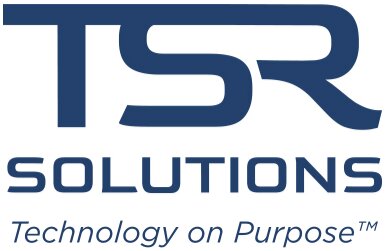Information Technology (IT) has become a crucial component for the success of any business. A strong IT department can give small businesses the opportunity to compete with much larger businesses, but conversely can take a larger business and hinder operations, causing much more harm than good. On top of having a strong IT department, fostering a harmonious relationship between IT departments and other employees can also be beneficial but sometimes challenging. With different areas of expertise and work cultures, it is important to bridge the gap between IT and other departments to enhance collaboration, streamline operations, and ultimately, drive business growth. In this blog post, we will explore five strategies for cultivating a strong and positive relationship between IT and the rest of your business.
1. PROMOTE COMMUNICATION AND COLLABORATION
Fostering open communication channels between IT and other departments is vital for collaboration. Encourage regular meetings and discussions for employees to share their needs, expectations, and any challenges they may be facing. This can help the IT department better understand how their work impacts other teams and create customized solutions to meet their requirements. By creating an environment where ideas and concerns are shared openly, employees will feel more connected and invested in each other's success.
2. DEVELOP CROSS-FUNCTIONAL TEAMS
Creating cross-functional teams that include members from both IT and non-IT departments can facilitate better understanding and collaboration. These teams can work together on specific projects, allowing employees to gain insights into each other's work processes, challenges, and strengths. This not only builds trust and rapport between IT and other employees but also improves overall efficiency and productivity.
3. PROVIDE TRAINING AND EDUCATION
Educating employees about IT-related topics can help bridge the knowledge gap and promote a more inclusive work environment. Offer workshops, training sessions, and resources that help non-IT employees understand technical jargon, basic troubleshooting, and how to use the tools and technology relevant to their roles. This empowers employees to become more self-sufficient and reduces the workload on the IT department, which can improve their relationship with other teams.
4. RECOGNIZE AND REWARD CONTRIBUTIONS
Recognizing and rewarding the hard work of IT professionals can go a long way in building positive relationships. Often, IT departments work behind the scenes, and their efforts may go unnoticed. Make an effort to acknowledge their contributions in company meetings, newsletters, or through incentive programs. This can boost morale and encourage a supportive work culture that appreciates the importance of IT in the organization.
5. ESTABLISH CLEAR EXPECTATIONS AND GOALS
To foster a harmonious relationship, it is essential to have clear expectations and goals for both IT and non-IT employees. Establish processes and protocols for requesting IT support and ensure that other departments understand their role in maintaining security and compliance. By clarifying expectations and responsibilities, you can reduce misunderstandings and friction between IT and the rest of the organization.
Cultivating a harmonious relationship between IT and other employees is an ongoing process that requires active engagement and commitment from all parties involved. By promoting open communication, building cross-functional teams, providing training and education, recognizing contributions, and establishing clear expectations, your business can create a collaborative work environment that drives innovation and success. Remember, the goal is not to eliminate differences but rather to appreciate them and leverage them for the greater good of the organization.



